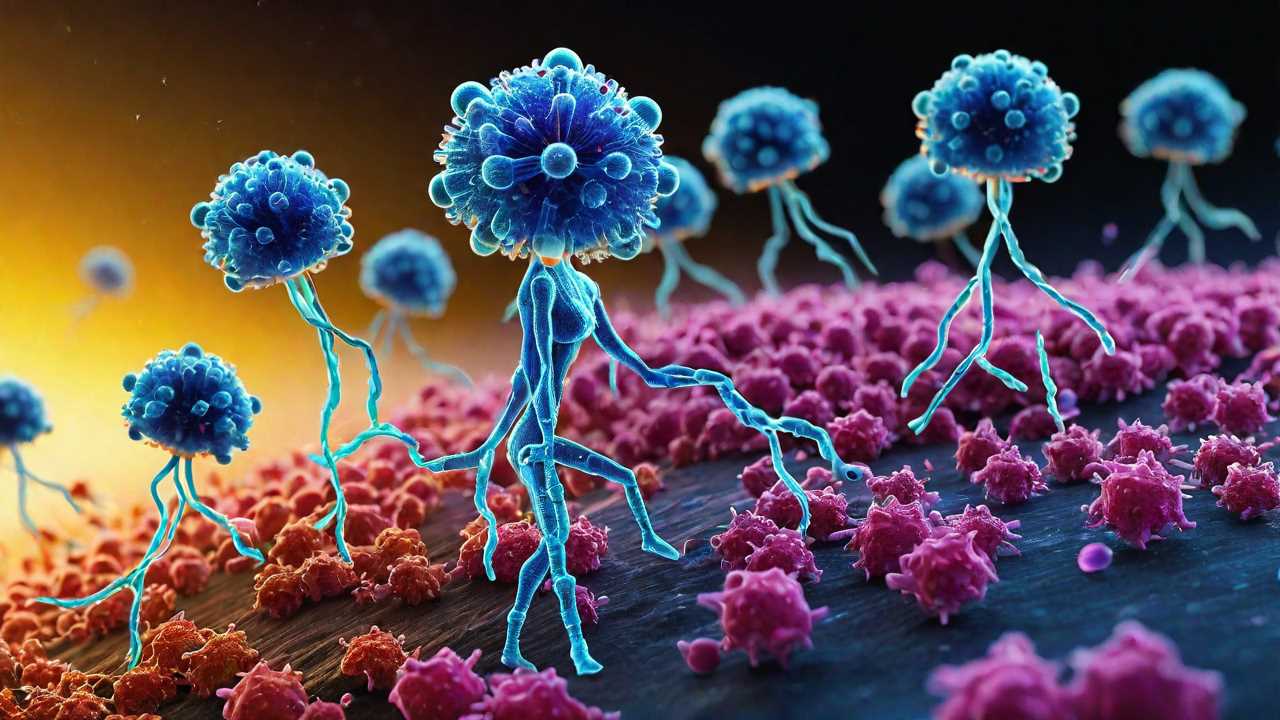Technology
How Can Nanotechnology Be Applied in Medicine?


Nanotechnology’s role in medicine is profound, offering a glimpse into a future where treatments are tailored, efficient, and targeted. Imagine a scenario where diseases are detected at their earliest stages, precisely targeted therapies are delivered with pinpoint accuracy, and monitoring treatment progress becomes personalized and real-time. The potential of nanotechnology in medicine is vast, promising to transform the way healthcare is approached.
Enhanced Drug Delivery Systems
Nanotechnology transforms drug delivery systems by enhancing targeted medication administration to specific cells or tissues within the body. This innovation allows for the precise delivery of drugs to the intended site, minimizing side effects and maximizing therapeutic effects. Through the use of nanoparticles, drugs can be encapsulated, safeguarding them from degradation and ensuring controlled release at the desired location.
The beauty of nanotechnology lies in its ability to overcome biological barriers, such as the blood-brain barrier, enabling drugs to reach previously inaccessible areas. By functionalizing nanoparticles with specific ligands, drugs can be targeted to particular cells, enhancing treatment efficacy while reducing systemic toxicity.
Moreover, nanotechnology offers the potential for personalized medicine by tailoring drug delivery systems to individual patient needs. This level of customization guarantees that treatments are optimized for each person, leading to improved outcomes and patient satisfaction.
Essentially, nanotechnology transforms drug delivery, paving the way for a new era of precise and effective medical treatments.
Precision Diagnostics and Imaging
In the domain of modern medicine, precision diagnostics and imaging have transformed the way diseases are detected and monitored. Nanotechnology has played a pivotal role in improving these essential processes by providing tools for more accurate and sensitive detection methods.
Nanoparticles can be engineered to target specific biomarkers, allowing for early detection of diseases like cancer or infections. By utilizing nanoscale imaging techniques, such as quantum dots or magnetic nanoparticles, healthcare professionals can visualize cellular and molecular structures with unprecedented detail.
Furthermore, nanotechnology enables the development of advanced imaging modalities like MRI contrast agents and fluorescent probes, enhancing the resolution and specificity of diagnostic imaging. These innovations not only aid in early disease diagnosis but also improve monitoring of treatment efficacy and disease progression.
With nanotechnology-driven precision diagnostics, healthcare providers can offer personalized treatment plans tailored to individual patient needs, ultimately leading to better outcomes and improved patient care.
Therapeutic Applications of Nanoparticles
Utilizing nanoparticles in therapeutics offers a promising avenue for improved drug delivery and heightened treatment efficacy in modern medicine. Nanoparticles possess unique properties such as their small size, large surface area-to-volume ratio, and tunable surface chemistry, making them ideal candidates for targeted drug delivery systems.
By functionalizing nanoparticles with specific ligands, drugs can be precisely delivered to the desired site of action, minimizing off-target effects and reducing overall drug doses required for therapeutic efficacy.
Additionally, nanoparticles can encapsulate drugs, protecting them from degradation and enabling controlled release kinetics. This controlled release can help maintain therapeutic drug levels in the body for an extended period, leading to improved patient compliance and reduced side effects.
Moreover, nanoparticles can overcome biological barriers such as the blood-brain barrier, allowing for drug delivery to previously inaccessible areas like the brain. This capability opens up new possibilities for treating neurological disorders and other conditions that require targeted drug delivery to specific organs or tissues.
Nanotechnology in Disease Monitoring
Nanoparticles offer a groundbreaking approach to disease monitoring, presenting innovative opportunities for precise diagnostic tools and real-time health tracking.
- Transformative Imaging Techniques: Nanoparticles can be engineered to target specific cells or tissues, improving the resolution and accuracy of imaging technologies such as MRI and CT scans.
- Biosensors for Early Detection: Nanotechnology enables the development of biosensors that can detect biomarkers of diseases at very early stages, allowing for timely interventions.
- Drug Delivery Monitoring: Nanoparticles can be utilized to monitor the delivery of therapeutic agents within the body, ensuring that medication reaches the intended target areas effectively.
- Continuous Health Monitoring: Through the use of wearable devices integrated with nanotechnology, individuals can monitor their health parameters continuously, providing valuable data for personalized healthcare strategies.
These advancements in disease monitoring highlight the potential of nanotechnology to transform the field of medicine, offering precise, efficient, and personalized solutions for monitoring and managing various health conditions.
Frequently Asked Questions
Can Nanotechnology Cure All Diseases?
You can investigate the potential of nanotechnology in disease treatment. While it holds promise for targeted drug delivery and precision medicine, curing all diseases solely through nanotechnology remains a complex challenge requiring extensive research and development.
How Do Nanoparticles Target Specific Cells?
To target specific cells, nanoparticles employ surface modifications. These alterations enable them to bind to unique cell receptors, enhancing precision in drug delivery. This approach increases treatment efficacy while minimizing side effects, an essential advancement in medicine.
Are There Any Risks Associated With Nanomedicine?
When considering risks in nanomedicine, it’s essential to assess potential toxicity, unintended side effects, and long-term impacts on the body. Understanding these factors allows for the development of safer and more effective medical applications.
Can Nanotechnology Be Used for Genetic Engineering?
Just like a finely tuned instrument, nanotechnology can transform genetic engineering. By manipulating genes at the nanoscale, precise modifications can be made, offering unprecedented control over genetic material and potential for groundbreaking advancements.
How Affordable Is Nanotechnology in Healthcare?
Nanotechnology in healthcare is becoming more affordable due to advancements in manufacturing and research. Cost reduction efforts, like scalable production methods and increased competition, are making this technology more accessible for various medical applications.


Hello! I’m Roger Jenkins, your go-to source at ReportingTheNews.com. I’m a USC graduate who combines journalistic precision with a Trojan’s passion. Based in sunny Los Angeles, my days are filled with more than just sunshine; they’re about capturing stories that resonate.
Beyond the newsroom, I’m an avid triathlete. Swimming, cycling, and running are more than just sports to me; they embody my commitment to discipline, focus, and a healthy dose of competition.
My love for travel takes me far and wide. Guadalajara, with its vibrant culture and unforgettable tacos, has a special place in my heart. I’m always searching for the next great story or a hidden culinary treasure.
At home, Nala, my energetic pet, is my constant companion. Together, we’re known in our neighborhood for our morning runs and evening strolls.
I’m driven by a belief in the power of storytelling to unite communities. Join me as we explore impactful narratives and stay updated with the latest news. You’ll also get a peek into my sports passions and travel escapades.
Want to get in touch? Follow me on Instagram for more insights and updates.

